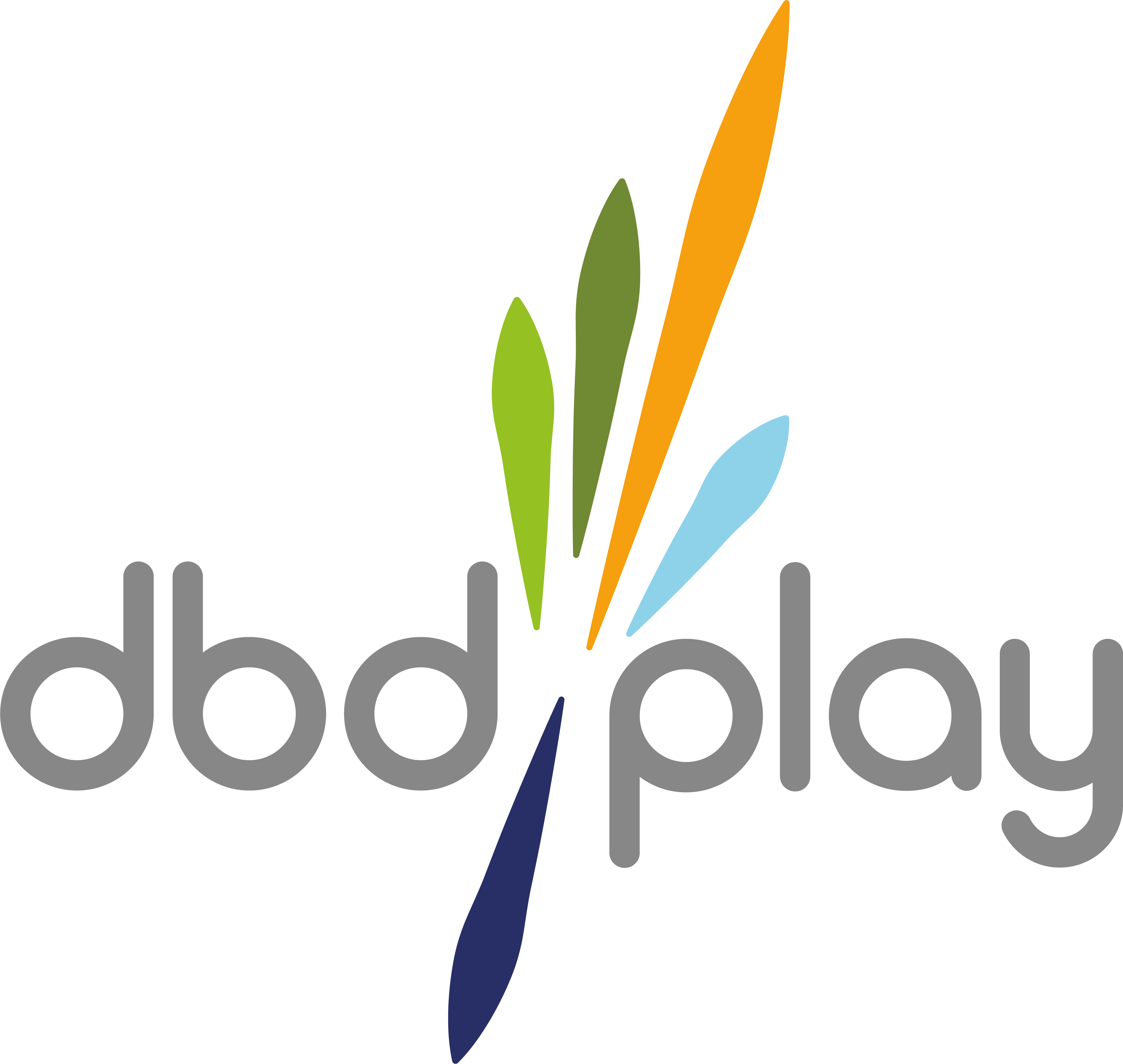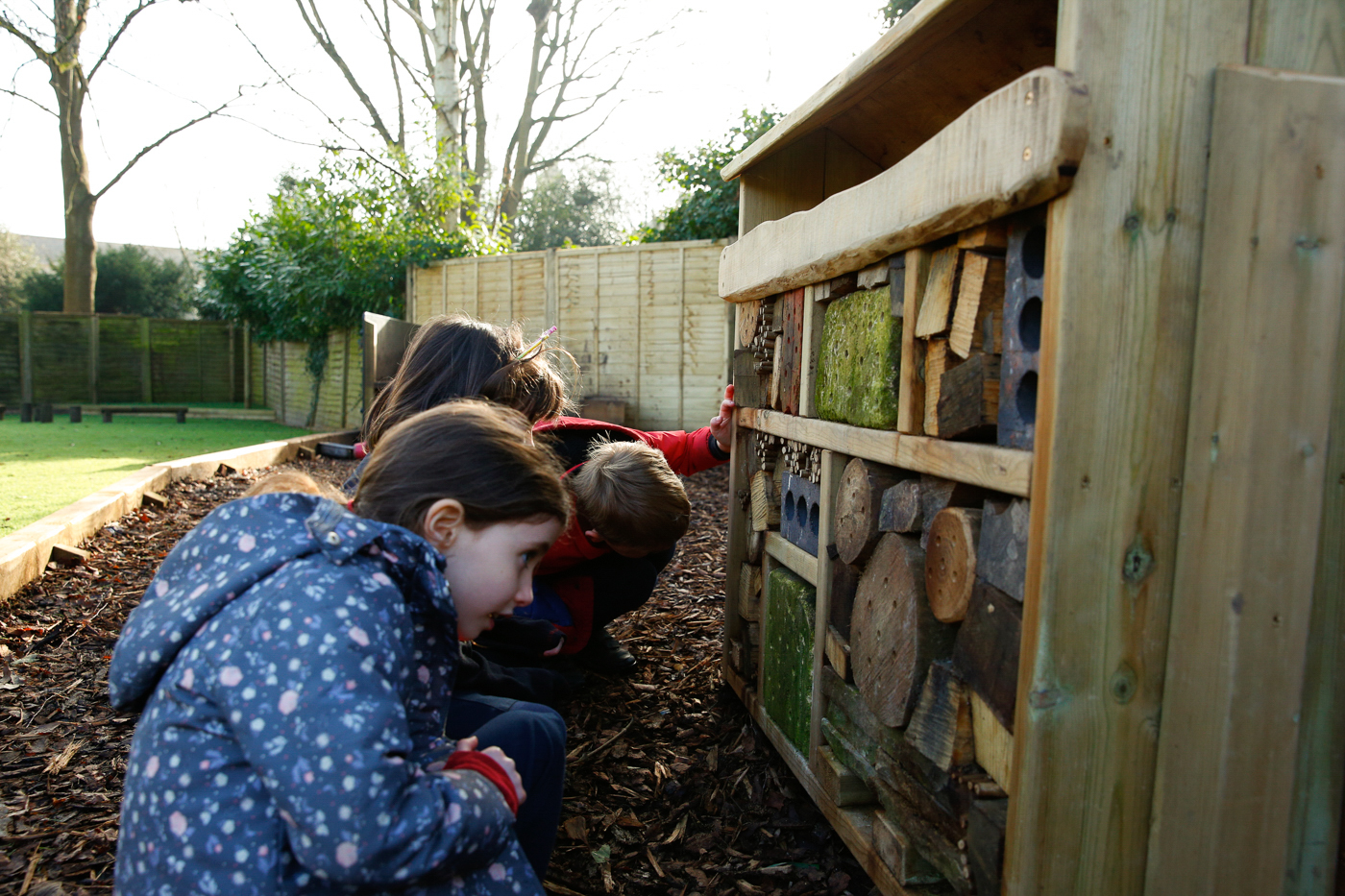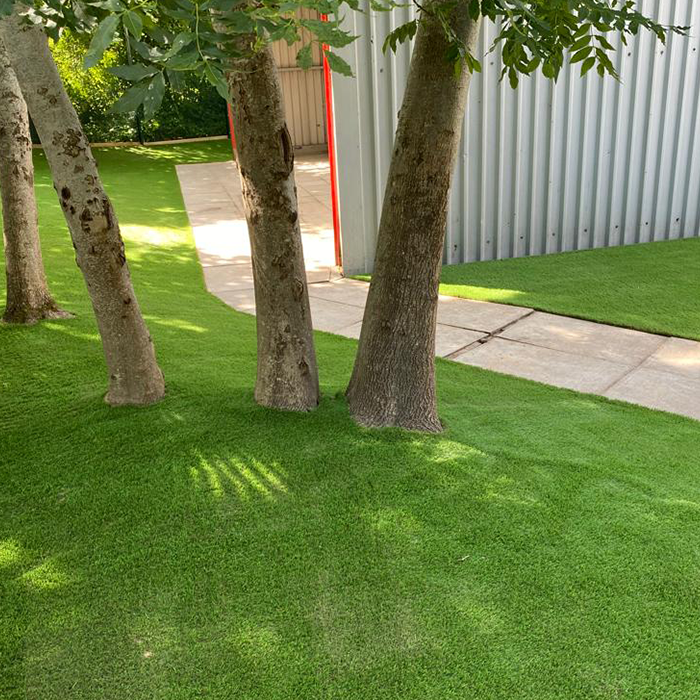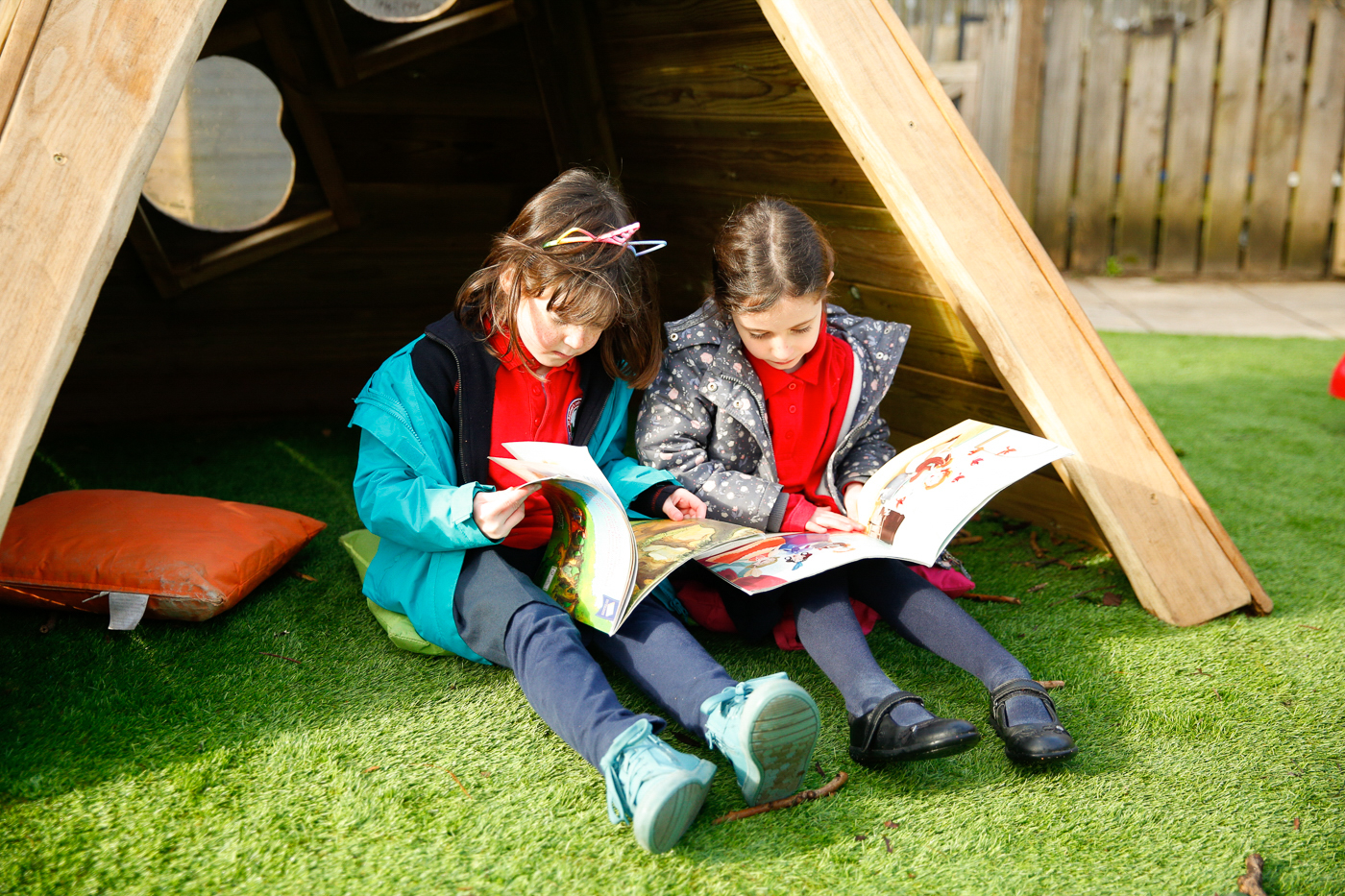Recent years have seen a growing interest from schools and educators in building a strong, creative approach to Science and Maths which can be applied across the curriculum. This comes with an increased focus on exploration, problem solving, and practical activities to bring more depth of understanding to the learning achieved in lessons teaching STEM subjects.
This approach to STEM (Science, technology, engineering, and maths) not only deepens learning, but can make it more accessible to children of different backgrounds and abilities. Additionally, they can build cross-curricular skills including perseverance, questioning, plan-building and creative thinking.
Playtime gives children the opportunity to self-lead STEM activities and explore questions which interest them independently. The playground can also give children the opportunity to think about how the concepts they’ve explored in class can be applied to real life.
Many children are innately drawn to explore their surroundings. However, providing the right surroundings and materials in a school playground can encourage children to connect this exploration to their wider knowledge or take their own questioning a step further.
Plants and Flowers
Many primary teachers encourage their students to grow and observe plants as part of the biology curriculum. However, outside planters can open opportunities for more ambitious projects or to explore plants in the long term.
.jpg?width=951&name=OakhurstEY-5%20(1).jpg)
This could be achieved through growing fruit and vegetables, observing seasonal changes, seeing pollination in action, or finding where different types of plants grow best.
Read our blog on Fruit, Flowers, and Vegetables in the Playground for more information and recommendations.
Playground Markings
Playground markings have long been used as a way to secure children’s knowledge of science and maths concepts. In infant playgrounds, this is most often seen through number snakes, hopscotch, and hundred squares.
In junior and secondary school playgrounds, you might see representations of the solar system, clocks, multiplication tables or even The Periodic Table.
Many of these, along with more interactive features like giant snakes and ladders, are classic playground features for a reason. However, thinking outside the box can also create some amazing opportunities for children to explore STEM subjects.
Marking out measurements can help children internalise commonly used language like metres and half miles. It can also spark activities such as finding out how far different children can jump or run in given times or racing paper aeroplanes.
Alternatively, you could give children the x and y axis for making their own block graphs using chalk, create areas for sorting different materials based on their properties, or represent lesser-used concepts like anatomy, sound waves, or The Water Cycle.
Physics-based play equipment
It sounds very specific, but you’ve probably seen this before in primary playgrounds. Equipment such as sand and water play, giant marble runs, and water walls all fall under this category. However, they’re not always recognised as an example of STEM in primary schools.
.jpg?width=900&name=LittleWillowsBath-21%20(1).jpg)
These pieces of equipment are wonderful for developing early engineering skills and problem solving in EYFS and KS2, as well as observing different forces at work and what can be done to affect them.
Additionally, they’re often used as a small group activity which can help children to stretch their team-building skills - learning how to collaborate effectively.
Learn more about our water walls, mud kitchens, and sand play here.
Building and Engineering
Building materials can be an exciting addition to your playground equipment. They can help children to find out what makes a stable structure and encourages them to build bases or props to use in creative play - imagining a real world use for their creation.
These can come in a variety of forms. From light-weight connecting tubes and building blocks, to giant polydrons, to safety-screened scrap materials such as recycled pallets, tires, and drainpipes.
Mud Kitchens
Whether they’re mixing mud pies, mashing up leaves, or stirring potions, children love mud kitchens. They’re often used alongside a Forest school curriculum to help children engage in nature. Not only are they great for growing fine motor skills and creativity, but they can help bring STEM education to primary school playgrounds.
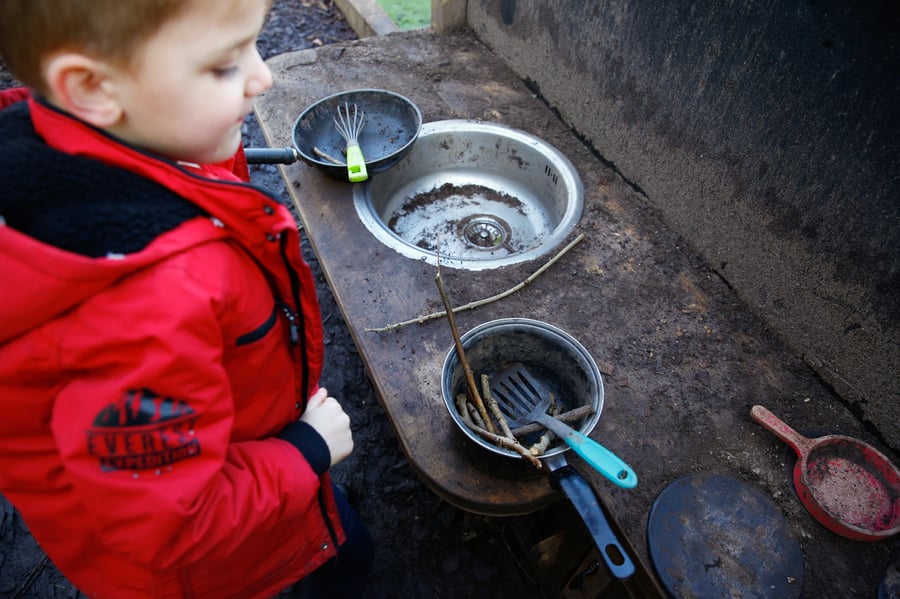
Jugs and cups in your mud kitchen help students grow familiar with measuring, volume and capacity. Mixing different natural materials together can also help them to identify the qualities of each, while dissecting plants can build knowledge of parts of leaves and flowers.
Scavenger Hunt Boards
Science in the playground can also be seen through scavenger hunt boards, signs, or laminated packs. These might encourage children to record natural things in the playground of different colours or starting with different letters.
They’re also an opportunity to get children familiar with scientific language. Why not have a board about all the different types of leaves and seeds found in the playground, types of cloud they might see, or the birds they can observe over the school year?
Bug Hotels
Bug hotels are another way to get children up close and personal with the natural world. These are a collection of materials which are perfect for insects to make their homes in. They encourage more wildlife and pollination in your playground, bringing more nature right to your children’s doorsteps.
Sturdier structures can be bought, but they’re also easy to make yourself with bricks, dead wood, or bamboo.
.jpg?width=900&name=LittleWillowsBath-14%20(1).jpg)
Insect hotels are excellent for learning about habitats. Children can observe how different insects require different homes and foods. By looking at the occupied “rooms” in the hotel, children may also be able to identify which bugs they’ve attracted. Has a leaf cutter bee used greenery to make itself at home or has a lady bird burrowed into the wood shavings?
Music and Sound
Music can bring an extra sensory element to the outdoors. Children love large, interactive instruments they can chime, hit, or rattle. Being able to physically feel the vibrations from these can help cement ideas about how sound works.
Having outdoor music for free play can additionally help them to learn about pitch, tempo, and how to generate different sounds with the same instrument.
For even more fun learning about sound and the way it travels, why not install a whisper catcher or a talk tube? Similar to the classic cans-on-a-string, these enable sound to carry long distances, so friends can talk to each other across the playground.
Creating STEM opportunities for playtime doesn’t have to be a large monetary investment, but it can make a real difference to how students view and interact with science and maths. It can additionally make a statement about how these subjects are valued in your school.
At dbdplay, we believe students learn the best through play, and strive to create valuable educational opportunities in every playground we design. Not only are dbdplay playgrounds a lot of fun, but they’re individually created to work within your school routines and help your children meet learning and development targets.
Call us today for a free chat about how we can make your playground even better!
Originally published Jul 7, 2022 12:26:39 PM , updated January 31, 2024
